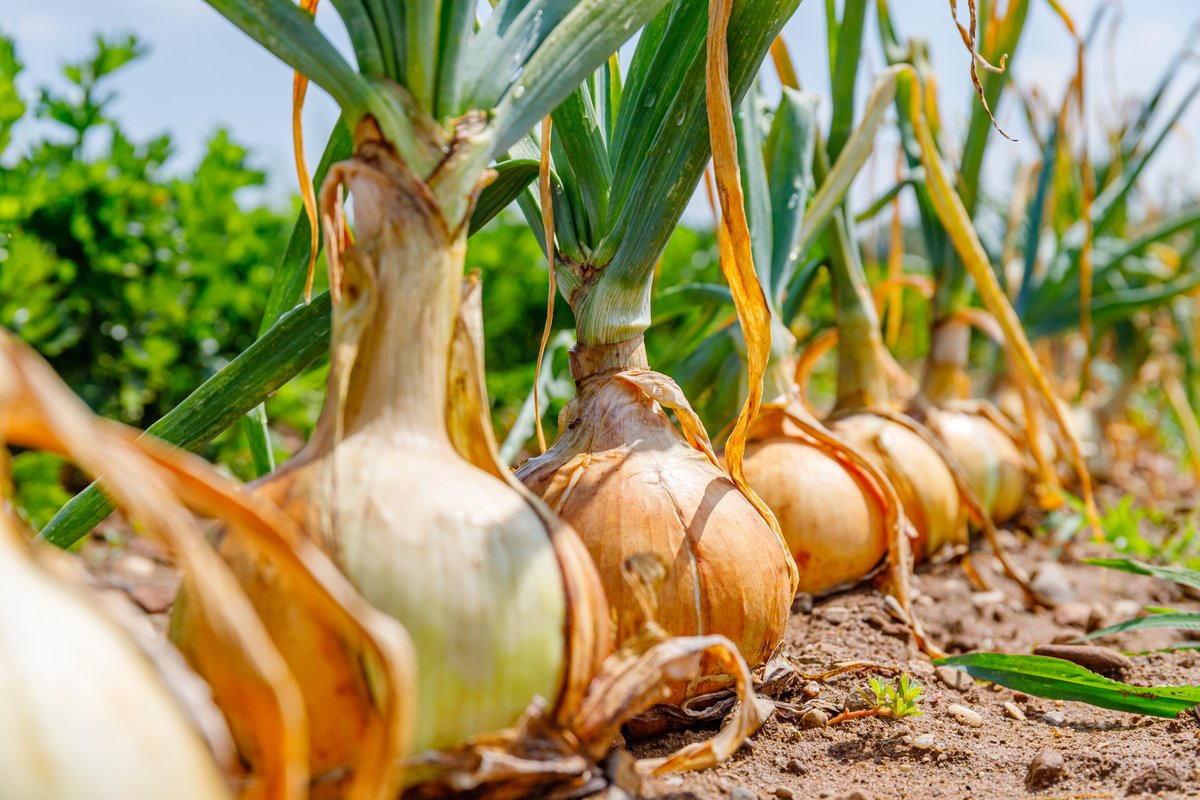In this comprehensive analysis, we delve into the profitability of onion farming in Zambia, exploring the factors that influence its economic viability, the challenges encountered by farmers, and the strategies to optimize returns.
In the dynamic landscape of Zambian agriculture, onion farming emerges as a compelling venture, offering promising prospects for farmers seeking profitable opportunities. With its ability to thrive in diverse agro-climatic conditions and high demand in both domestic and export markets, famers ask, how profitable is onion farming in Zambia? Onion cultivation has garnered significant attention as a lucrative cash crop. Explore the World of Garlic Farming in Zambia! Discover the Secrets to Success in Zambia’s Thriving Garlic Industry Today!”
Market Dynamics and Demand:
Onions hold a pivotal position in Zambia’s culinary culture and food security framework, featuring prominently in various dishes and cuisines. Moreover, the crop serves as a staple ingredient in processed food industries, catering to a wide range of consumer preferences.
The growing urbanization, changing dietary habits, and population expansion further fuel the demand for onions, creating a robust market ecosystem for producers. Additionally, Zambia’s strategic location within the Southern African region presents opportunities for export to neighboring countries, enhancing the revenue potential for onion farmers.
Cost-Benefit Analysis:
A critical aspect of assessing the profitability of onion farming lies in conducting a comprehensive cost-benefit analysis, considering input costs, yield projections, market prices, and operational expenses.
While the specific figures may vary depending on factors such as farm size, location, and production practices, a generalized overview can offer valuable insights into the economic dynamics of onion cultivation in Zambia.
Cost Components:
- Land preparation: Includes land clearing, plowing, and leveling.
- Seeds and seedlings: Costs associated with purchasing quality onion seeds or seedlings.
- Fertilizers and pesticides: Expenses for soil amendments, fertilizers, and pest control measures.
- Labor: Wages for farm laborers involved in planting, irrigation, weeding, and harvesting.
- Irrigation: Investments in irrigation infrastructure or water management systems.
- Miscellaneous: Variable expenses like transportation, utilities, and administrative costs.
Benefit Components:
- Yield: Anticipated onion yield per hectare based on agronomic practices and environmental conditions.
- Market price: Prevailing onion prices in local and export markets.
- Gross revenue: Total income generated from onion sales.
- Net profit: Revenue minus total production costs, reflecting the profitability of onion farming.
Challenges and Mitigation Strategies:
Despite the promising prospects, onion farming in Zambia is not without its challenges. Factors such as unreliable weather patterns, pest and disease outbreaks, post-harvest losses, and market fluctuations can impact profitability and sustainability.
To mitigate these challenges, farmers can adopt various strategies, including:
- Climate-smart agricultural practices: Implementing water-efficient irrigation techniques, mulching, and crop rotation to mitigate climate risks.
- Integrated pest management (IPM): Employing biological control methods, resistant varieties, and judicious use of pesticides to combat pest infestations sustainably.
- Value addition and market linkages: Exploring opportunities for onion processing, storage facilities, and establishing partnerships with wholesalers, retailers, and export agencies to access premium markets and enhance profitability.
Conclusion: In conclusion, onion farming holds immense promise as a profitable venture in Zambia, driven by growing domestic demand, export opportunities, and favorable agro-climatic conditions.
By conducting thorough cost-benefit analyses, adopting sustainable production practices, and implementing risk mitigation strategies, farmers can unlock the full potential of onion cultivation, contributing to food security, rural livelihoods, and economic prosperity.
As Zambia continues to prioritize agricultural development and diversification, onion farming stands poised to play a pivotal role in shaping a resilient and vibrant agrarian economy for the nation.
Cost-Benefit Analysis for Onion Farming in Zambia (Per Hectare)
Cost Components:
- Land Preparation:
- Land clearing, plowing, leveling: 6000 ZMW
- Seeds and Seedlings:
- Purchase of quality onion seeds or seedlings: 3000 ZMW
- Fertilizers and Pesticides:
- Soil amendments, fertilizers, pest control: 5000 ZMW
- Labor:
- Wages for planting, irrigation, weeding, harvesting: 8000 ZMW
- Irrigation:
- Infrastructure and water management: 4000 ZMW
- Miscellaneous:
- Transportation, utilities, administrative costs: 2000 ZMW
Total Costs: 28000 ZMW per hectare
Benefit Components:
- Yield:
- Anticipated onion yield per hectare: 15,000 kg
- Market Price:
- Prevailing onion price: 6 ZMW/kg
- Gross Revenue:
- Total income from onion sales: 90,000 ZMW (15,000 kg * 6 ZMW/kg)
- Net Profit:
- Revenue minus total production costs: 62,000 ZMW (90,000 ZMW – 28,000 ZMW)
Summary:
- Total Costs: 28,000 ZMW
- Total Revenue: 90,000 ZMW
- Net Profit: 62,000 ZMW
Here’s the cost-benefit analysis presented in a table format:
| Cost-Benefit Analysis for Onion Farming (Per Hectare) | Amount (ZMW) |
|---|---|
| Cost Components: | |
| Land Preparation | 6000 |
| Seeds and Seedlings | 3000 |
| Fertilizers and Pesticides | 5000 |
| Labor | 8000 |
| Irrigation | 4000 |
| Miscellaneous | 2000 |
| Total Costs: | 28000 |
| Benefit Components: | |
| Yield | 15000 kg |
| Market Price | 6 ZMW/kg |
| Gross Revenue | 90000 |
| Net Profit: | 62000 |
This table summarizes the cost-benefit analysis for onion farming per hectare in Zambian Kwacha (ZMW).
How profitable is onion farming in Zambia?
This simplified analysis indicates that, based on the given parameters and exchange rate, onion farming in Zambia can be profitable, yielding a net profit of 62,000 ZMW per hectare.

Can I have more data on how to grow onion
Good morning. Is there updated data as of now on Onion Gross margins?
Am happy to learn more on onion production, am interested in this. Thanks a lot